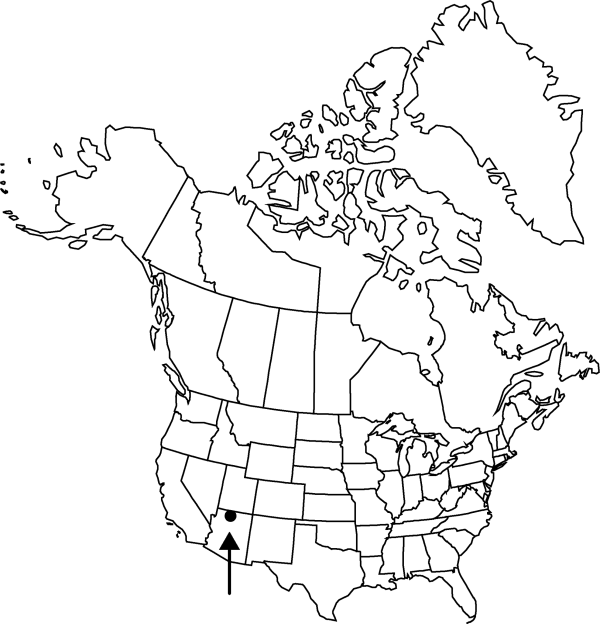Sclerocactus sileri
Haseltonia 2: 39. 1994.
Stems unbranched (2-branched), green, depressed-spheric to short cylindric, 4–8.5 × 3–5.5 cm; ribs usually (12–)13(–14), not well developed, tubercles prominent on low ribs. Spines obscuring stems or nearly so; radial spines 6–8(–12) per areole, acicular, elliptic in cross section, 5–15 × 0.5–0.8 mm; central spines 4–5 per areole; abaxial central spines 1–2 per areole, white, gray, or purplish tinged, turned or curving somewhat downward, angled, strongly hooked, slightly contorted, terete to angled, 12–35 × 0.5–1 mm; lateral central spines 2 per areole, similar to abaxial but slightly shorter, usually not hooked; adaxial central spines 1–2 per areole, erect, recurved, white to tan, strongly flattened, conspicuous, 13–40 × 0.8–2 mm. Flowers funnelform to campanulate, 2.5–3 × 2–3 cm; outer tepals with brownish and yellowish margins, larger oblanceolate, 10–17 × 5–8 mm, apex mucronate, margins membranous, crisped or minutely toothed; inner tepals yellow, sometimes suffused with brown, largest tepals oblanceolate, 15–25 × 5–7 mm, apex mucronate; filaments white to greenish white; anthers yellow; styles minutely but densely papillate Fruits dehiscent along 2–4 vertical slits, green, turning red to tan, ovoid, 8–25 × 8–14(–22) mm, dry; scales few, membranous, scarious-margined, minutely toothed or fringed. Seeds black to light brown, 2.7–3 × 2.2–2.5 mm; testa with rounded papillae.
Phenology: Flowering late Apr–May.
Habitat: Silty sand or clay soils, often with gravel, grama grasslands with dropseed, yucca, hedgehog cactus, sagebrush, and snakeweed, pinyon-juniper woodlands
Elevation: 1600-1700 m
Discussion
Of conservation concern.
As far as is known, based on field investigations and herbarium collections, Sclerocactus sileri is restricted to northeast Coconino County, Arizona. This enigmatic cactus shares morphologic characteristics with both Sclerocactus whipplei (F. Hochstätter 1996) and S. pubispinus. The floral morphology and color is reminiscent of S. whipplei; however, the adaxial central spine morphology and fruit dehiscence is much like that found in S. pubispinus and S. spinosior. Phylogenetic analyses of chloroplast DNA sequences (J. M. Porter et al. 2000) provided evidence that S. sileri is the sister taxon to a clade including S. brevispinus, S. whipplei, S. cloverae, S. glaucus, S. parviflorus, S. wetlandicus, and S. wrightiae. Therefore, there is no support for immediate links between S. sileri and either S. whipplei or S. pubispinus.
Selected References
None.
